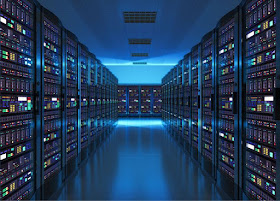The Evolution of Information Technology: Transforming the Way We Live and Work
Introduction:
Information Technology (IT) has come a long way since its inception, revolutionizing the way we live, work, and communicate. From simple calculations to complex data analysis, IT has transformed the fabric of our society, enabling us to access vast amounts of information, connect with people worldwide, and automate various tasks. In this blog, we'll explore the history of IT, its current trends, and future directions.
The History of Information Technology:
- 1950s-60s:
The first computers, like UNIVAC and ENIAC, were developed for scientific and military applications.
- 1970s-80s:
Personal computers emerged, making IT accessible to individuals and small businesses.
- 1990s-2000s:
The internet and World Wide Web became mainstream, enabling global connectivity and information sharing.
Current Trends in Information Technology:
- Cloud Computing: On-demand access to computing resources, enabling scalability and flexibility.
- Artificial Intelligence (AI) and Machine Learning (ML): Automating tasks, enhancing decision-making, and improving customer experiences.
- Cybersecurity: Protecting against threats, vulnerabilities, and data breaches.
- Internet of Things (IoT): Interconnecting devices, enabling smart homes, cities, and industries.
- Big Data Analytics: Extracting insights from vast datasets, driving business decisions and innovation.
Future Directions in Information Technology:
- Quantum Computing: Harnessing quantum mechanics for exponential computing power and efficiency.
- Extended Reality (XR): Enhancing human experiences with Virtual, Augmented, and Mixed Reality.
- 5G Networks: Faster, more reliable, and widespread connectivity, enabling new use cases.
- Sustainable IT: Environmentally friendly technologies, reducing e-waste and carbon footprints.
Call to Action:
- Stay updated on the latest IT trends and breakthroughs.
- Develop new skills to remain relevant in the industry.
- Innovate and experiment with emerging technologies.
- Prioritize digital responsibility and sustainability.
Join the conversation and share your thoughts on the future of Information Technology!
Here are some explained parts for Information Technology:
Hardware:
- Computers: Desktops, Laptops, Tablets, Smartphones, and Servers
- Storage Devices: Hard Drives, Solid State Drives (SSDs), and Flash Drives
- Input/Output Devices: Keyboards, Mice, Scanners, Printers, and Monitors
- Networking Devices: Routers, Switches, and Modems
Software:
- Operating Systems: Windows, macOS, Linux, and Mobile OS (Android, iOS)
- Productivity Applications: Microsoft Office (Word, Excel, PowerPoint), Google Docs, and LibreOffice
- Programming Languages: Python, Java, JavaScript, C++, and Ruby
- Web Browsers: Google Chrome, Mozilla Firefox, Safari, and Microsoft Edge
Networking:
- Internet: Global network connecting computers and devices
- Local Area Network (LAN): Connects devices in a limited area (home, office)
- Wide Area Network (WAN): Connects devices over a larger distance (city, country)
- Wi-Fi: Wireless networking technology
Data and Storage:
- Data Types: Text, Images, Audio, Video, and Binary
- File Systems: Organizes and stores files (NTFS, HFS, FAT)
- Databases: Structured data storage (Relational, NoSQL)
- Cloud Storage: Online storage (Google Drive, Dropbox, OneDrive)
Security:
- Firewalls: Blocks unauthorized access
- Encryption: Protects data with codes (SSL/TLS, AES)
- Antivirus Software: Detects and removes malware
- Authentication: Verifies user identities (Login, Passwords)
Artificial Intelligence (AI) and Machine Learning (ML):
- AI: Simulates human intelligence (Reasoning, Problem-Solving)
- ML: Trains systems to learn from data (Classification, Regression)
- Deep Learning: Neural networks for image and speech recognition
These are just some of the many parts that make up the vast and fascinating world of Information Technology!
Conclusion:
Information Technology has transformed our world, and its evolution continues to shape our future. As IT professionals, innovators, and users, we must embrace these changes, address challenges, and harness the power of IT to create a better, more connected world.











.jpeg)

Comments
Post a Comment